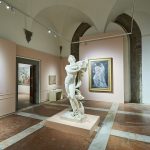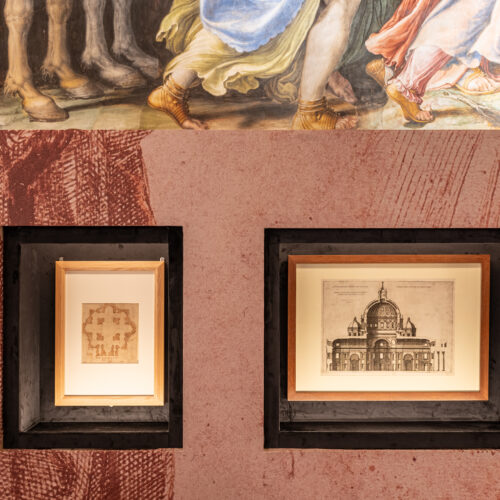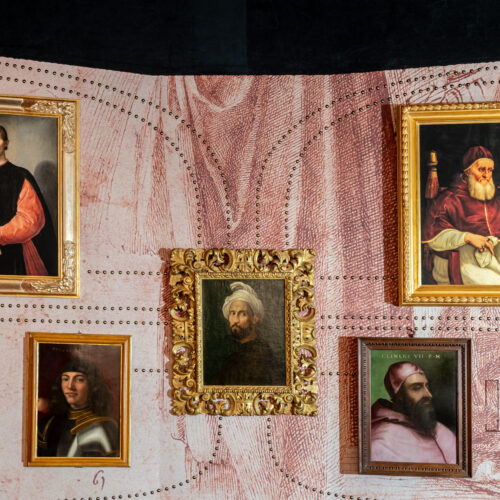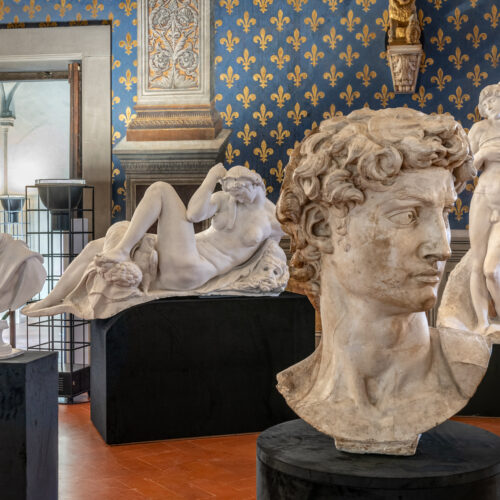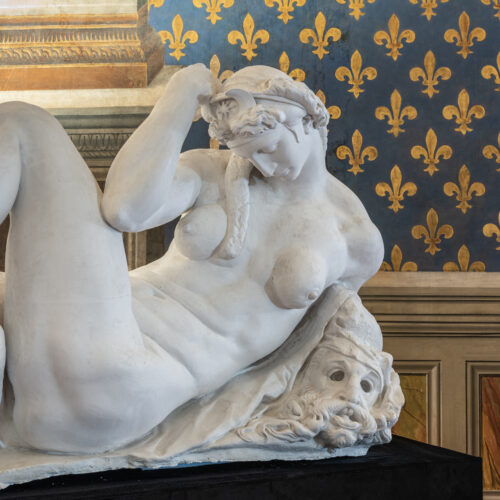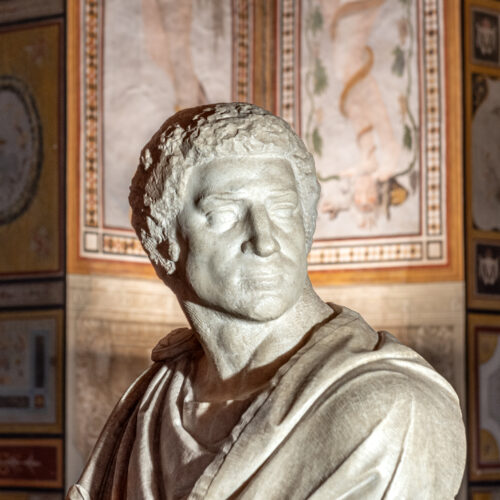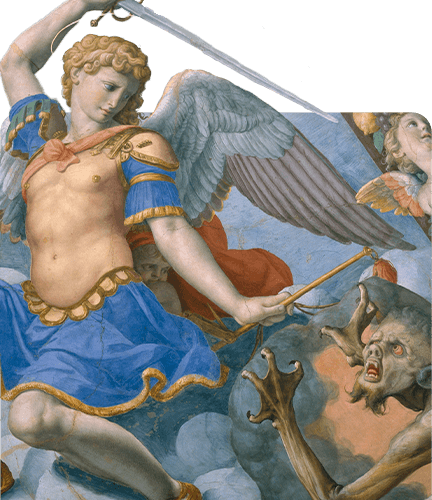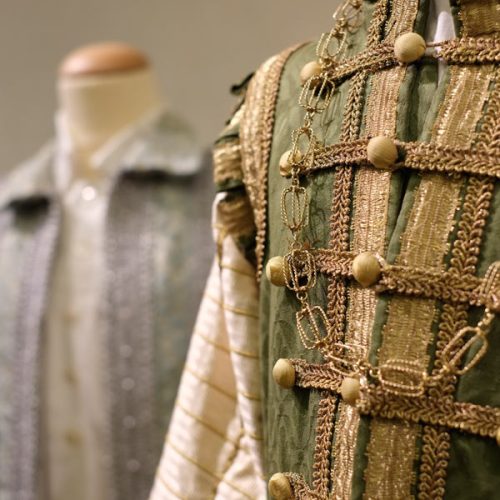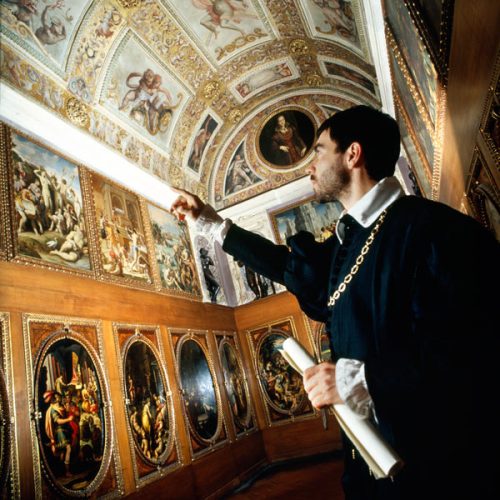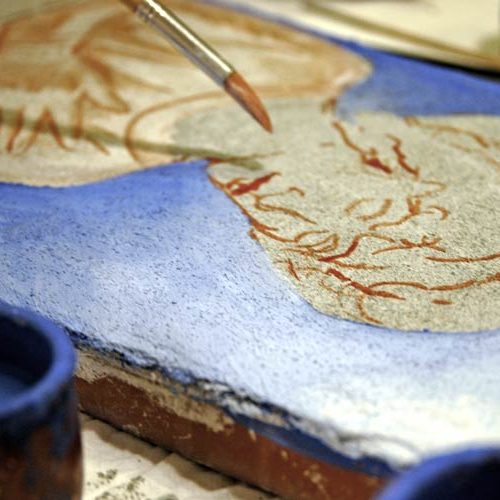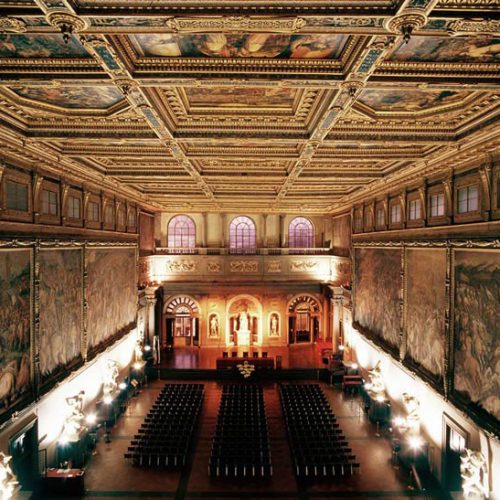Michelangelo e il Potere
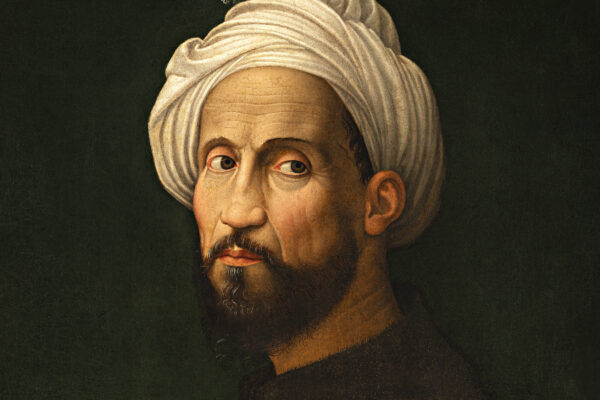
to 26 January 25
From 18 October 2024 to 26 January 2025, Palazzo Vecchio will host the exhibition Michelangelo e il Potere, promoted by the Municipality of Florence in conjunction with the Fondazione Casa Buonarroti and organised by the Fondazione MUS.E. The design and supervision of the displays are by architect Guido Ciompi, in collaboration with architect Gianluca Conte of the Guido Ciompi & Partners Studio.
Michelangelo e il Potere will unfold on the second floor of the Palazzo Vecchio, between the Sala delle Udienze and the Sala dei Gigli, with an itinerary of more than fifty works: sculptures, paintings, drawings, autograph letters and plaster casts, the result of exceptional loans from prestigious national and international institutions, such as the Uffizi Galleries, the Musei del Bargello, the Fondazione Casa Buonarroti, the Fundación Colección Thyssen-Bornemisza and the Gallerie Nazionali d’Arte Antica in Rome, to name but a few. The works have been selected to illustrate Michelangelo’s relationship with power, his political vision and his determination to place himself on a par with the most powerful figures of the time.
The undisputed star of the exhibition will be the famous bust of Brutus, sculpted by Michelangelo around 1540. The work has been exceptionally loaned by the Museo Nazionale del Bargello and will be on display in the Palazzo Vecchio for the first time in history. The placing of the sculpture of Brutus in the seat of the Florentine government has a strong political significance, highlighting the contrast between Michelangelo’s political thought and Medici despotism. Brutus, an exemplary portrait of the tyrannicide, can be considered to all intents and purposes a political manifesto. The bust was suggested to the artist by Donato Giannotti, who was one of the leading exponents of the party of Florentine exiles who remained loyal to the republic and were sworn enemies of the Medici, who had become absolute rulers of Florence after the siege in 1530. Brutus is said to have been sculpted after the assassination of Duke Alessandro il Moro (the Moor), who was stabbed on 6 January 1537 by his cousin Lorenzino de’ Medici, known as Lorenzaccio – who was hailed as the hero of Florentine Liberty by the exiles. According to an alternative hypothesis, it may be dated after Lorenzaccio’s assassination in Venice on 26 February 1548 at the hands of assassins sent by Cosimo I. The sculpture of Brutus was created as a tribute by Giannotti to the highly cultured Cardinal Niccolò Ridolfi, a leading figure among the Florentine exiles and supporter of a republican model of government with popular input, who exalted Lorenzino de’ Medici as the ‘new Brutus’. The proud gaze of Brutus, slayer of Caesar, recalls, with its blazing inner fire, that of David in Piazza della Signoria. Indeed, in the intentions of the artist and his patrons, the two sculptures may have shared the symbolic function of defender of the Florentine republic.
The display in Sala dei Gigli, aims to recreate the dense network of Michelangelo’s encounters, confrontations and clashes with power, creating a sort of constellation of portraits of illustrious men and women, all revolving around the Portrait of the artist painted by his friend Giuliano Bugiardini, positioned in the centre of the large wall like a ‘blazing star’. This is followed by portraits of Girolamo Savonarola by Fra’ Bartolomeo and of Pier Soderini, attributed to Ridolfo del Ghirlandaio, as well as portraits of Cosimo I in Armour by Agnolo Bronzino, Vittoria Colonna, Cardinal Reginald Pole in conversation with Paul III and Leo X with Cardinals Giulio de’ Medici and Innocenzo Cybo, also by Bugiardini. This ‘quadreria’ shows vividly the enormous magnetism exerted by Michelangelo and his works, in a network of connections between the artist and power that spanned almost a century – a century that saw the golden age of Lorenzo the Magnificent, the time of Friar Savonarola and his Piagnoni (weeping/wailing) followers and then the exceptional cultural ‘new world’ established by Gonfalonier Soderini along with Machiavelli and Lorenzo di Pier Francesco, known as il Popolano, up to the years of the Medici double pontificate with Leo X and Clement VII. These were decades that tested the power of the Church of Rome, which had been affected by Luther’s Reformation, to which it reacted with the Council of Trent and the consequent Counter-Reformation, subjecting the arts of painting and sculpture to the orthodoxy of Catholic doctrine. Amidst the turmoil of religious conflicts and wars that swept through Europe, as Italy and Tuscany became a battleground between Spain and France, Michelangelo defended his freedom of conscience to the utmost, asserting the supreme power of art and the artist.
Other notable works will illustrate the various relationships Michelangelo had with the people he encountered during his long life. Many of them have been loaned by the Fondazione Casa Buonarroti, including a drawing depicting a Nude Torso from Behind, a study for the Battle of Cascina (which relates to the commission by Pier Soderini, the Gonfalonier who wished to have the statue of David at the foot of the government building) and four Designs of Fortifications drafted by the artist during the siege of Florence, when he was in the service of the Republic. There are also two Plans for the San Lorenzo Complex, one for the façade of the Basilica and the other for the Biblioteca Laurenziana, which tell the story of his relationship with the Medici popes, Leo X and Clement VII. In addition to this significant corpus of drawings, there is the Plan of St. Peter’s Basilica, held in the Uffizi Gallery, an undertaking that kept Michelangelo occupied for many years from 1546 until his death in 1564, in not-always easy dealings with no fewer than four popes, from Paul III to Pius IV.
Two previously unseen marble sculptures attributed to 16th-century sculptors from private collections will be exhibited to give more insight into the legendary stories surrounding two lost early works, the Faun and the Sleeping Cupid.
The creation of a sort of gipsoteca, a plaster cast gallery, dedicated to Michelangelo, promises to be extremely impressive, with casts of some of his major works, all linked for various reasons to the artist’s relationships with the greats of his time. These include the Angel Holding a Candelabrum, produced in Bologna where he came under the patronage of the nobleman Francesco Aldrovandi, the cast of Bacchus commissioned by Cardinal Raffaele Riario, nephew of Sixtus IV, the plaster replica of the Vatican Pietà, created in Rome for Cardinal Jean Bilhères De Lagraulas, the monumental copy of the head of the David in Piazza Signoria, the two Slaves, (the Bearded Slave and the Dying Slave), and Night, from the Medici Chapels, one of the sculptures created to celebrate the Medici Dukes Lorenzo and Giuliano Among these indirect tributes, there is also a plaster reproduction of the Bust of Michelangelo, taken from the original sculpted by Daniele da Volterra.
After the exhibition a specialist publication on the subject of ‘Michelangelo and Power’ will be available.
A project by the Museo Novecento for the Municipality of Florence and the Museo di Palazzo Vecchio.
Promoted by the Municipality of Florence in collaboration with the Fondazione Casa Buonarroti and organized by the Fondazione MUS.E, with technical sponsorship from AON – Liberty Specialty Markets and media partnership with La Nazione.
Sincere thanks for their kind contributions to the realization of the exhibition go to Associazione Amichae, Ilaria Crema, Leofrance srl, Carlo and Rosella Nesi, Maria Manetti Shrem, and Margherita Stabiumi. The exhibition will be followed by a publication curated by specialists on the theme “Michelangelo and Power.


